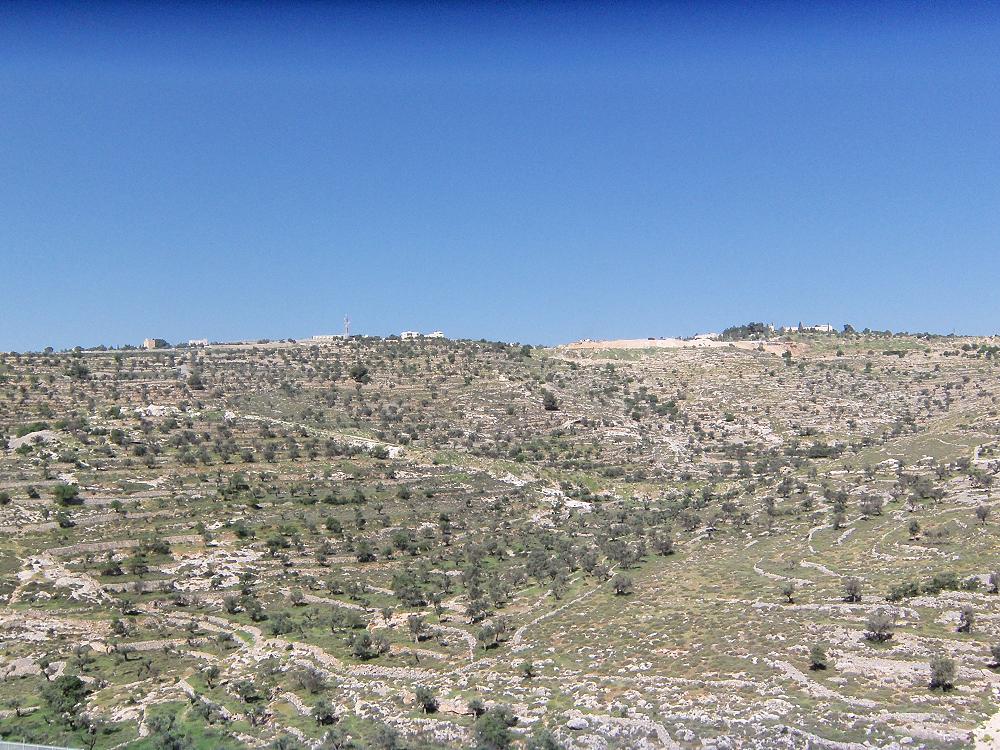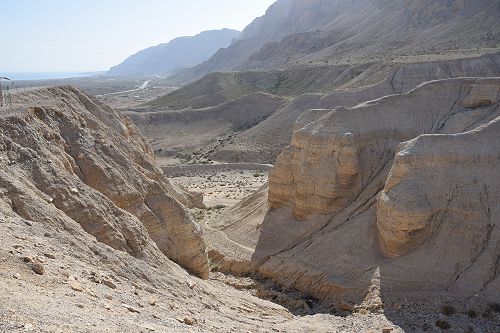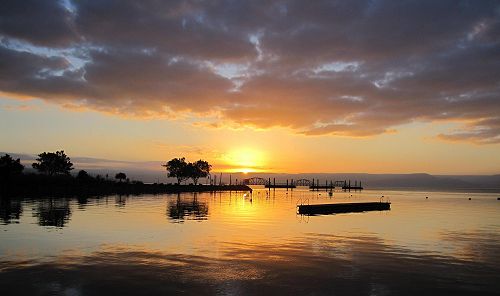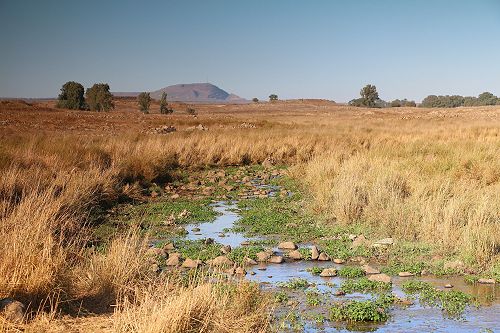
Part One: An Ecological Reading of Mark's Gospel
We begin a journey of eleven articles reflecting with Elaine Wainwright on the gospel of Mark from an ecological perspective. As preparation for the series, read Mark's gospel as a story - in one sitting if possible – to familiarise yourself with it again.
When you read Mark’s gospel did you find your attention drawn to Jesus
and the other human characters with whom Jesus interacts? And were you also
attentive to God and the Divine presence functioning as a background character
in the story? Most of us read and reflect on the gospels like that — attending to the human/divine presences.
However many voices in our world today are making us aware that our almost exclusive focus on the human community and its needs and desires is placing the material world, or "creation", in jeopardy. Indeed quite recently Pope Francis voiced the cry:
“If we destroy Creation, Creation will destroy us!”
Not only the Pope but our planet and its other-than-human community is calling us to a change of mindset.
New story of the universe
At the same time, a new story of the universe emerging from the work of cosmologists and other scientists, draws our attention to the more than 13–14 billion years of the universe’s evolving. This awareness, in turn, challenges our anthropocentric or human-centred perspectives. In like manner ecological crises such as climate change, destruction of species, the violent fracking of Earth itself and many other events, are calling for a shift in both perspective and ethic.
This is the context in our world today that is inviting us to read our world and to read our sacred story ecologically. Such an invitation is a call similar to that in the opening verses of the Markan gospel: repent (Mark 1:15). This is a call to metanoia, a call to change one’s perspective, one’s way of seeing. In relation to our reading of the gospel story, it is an invitation to read not only for the human and the holy but also for habitat. It invites us to be attentive to the complex web of the other-than-human which is interwoven with the human and the holy: place, space, together with all elements of the natural and the built environments. To read in this way could be called reading inter-textually and contextually.
Read the whole text anew
In this series I will read in some detail selected texts threaded through the Markan narrative. This will be an invitation to you to read other surrounding texts from a similar perspective. The texts are chosen not because they lend themselves to an ecological reading. Rather they represent different types of stories (healing stories, parables, and others) as I would contend that we need to learn to read our entire sacred story with this new lens, to read/hear the entire text anew. The focus of this month’s reading is the opening verses of the gospel, Mk 1:1-11. This is to hear the call to repent.
The story begins with this phrase: the beginning of the good news (euangelion) of Jesus Christ. We receive the gospel today generally in written form. Its early recipients would have heard it, heard proclamation. This was a new proclamation (euangelion), not that of the emperor but rather of Jesus Christos: Jesus, the anointed one. The gospel begins as sound, inviting us to hear, to draw our often neglected senses into the receiving, the hearing of the gospel. And these senses recognize Jesus as Christos, as the one named holy with the pouring out of oil, that rich material element.
Evoking our hearing
In verse 2, the evangelist continues to evoke our sense of hearing, to hear what is written in the scroll of the prophet Isaiah, to imagine the voice of the prophet speaking the call. It is a call to engage with the material elements, the desert, the pathway. The way of the anointed one is prepared for through evoking the sacred story of the Jewish people that includes the materiality of place. It invites readers into a world that includes the other-than-human.
Echoing this is the appearance of John in the wilderness. This wilderness evokes a geographic space with a unique habitat of animal and plant around the Sea of Salt. The desert also functions metaphorically in Israel’s sacred story of its interrelationship with the holy One. It is a place of divine encounter in which discipline, purification and/or transformation take place (e.g. Deut 8:1-10 and Deut 30). The title given to John, namely the Baptizer, evokes water, the water of the Jordan River that flows through the wilderness as well as water that purifies.
John’s location is the marginal place between wilderness and waterfront. He is in place, in the complexity of relationships within Earth and its constituents. His clothes are of camel’s hair, the belt around his waist is of hide or skin and his food is locusts and wild honey. The description of John in his habitat evokes the "gift exchange" process. The giving up of life in the Earth cycles — animals’ skins for clothing, locust bodies for human food — allows a new habitat to emerge for John. These can be seen as "gift" as their "giving" provides John with a new place for his proclamation. As readers attending with respect to the processes of gift exchange we are tuning into the call to ecological metanoia (v. 4).
Key element is water
Like the multitudes of people (v. 5), Jesus, introduced in 1:1, comes to John for baptism. This ritual process is enacted with one of the key material elements necessary for life, namely water. Water is central in Earth’s genealogy and its ongoing maintenance, as well as to the survival of so many species including the human. The presence of the divine in this scene is also evoked in material terms: the skies are torn asunder and a spirit named to be of God is imaged as a dove alighting on Jesus (v. 10). Habitat, the human, and the holy intersect in this unique moment of encounter.
The gospel reader is invited to see what takes place on the Earth and in the skies and then to hear the heavenly voice. As at the beginning of this section, the listener’s/reader’s senses are evoked by what is encountered materially in the narrative. Jesus is then named as "son" and "beloved" by the affirming heavenly voice.
Habitat, the human and the holy are intimately interconnected as the Markan euangelion begins. I invite you to spend time with the short introduction to the Gospel of Mark (1:1-11) attentive to the complex relationships of habitat, the human, and the holy woven into the text and inviting our participation.
Elaine Wainwright RSM is a scripture scholar, recently retired as the foundation Professor of Theology at the University of Auckland. She continues to research and write.
Published in Tui Motu Magazine February 2015.
Gallery




